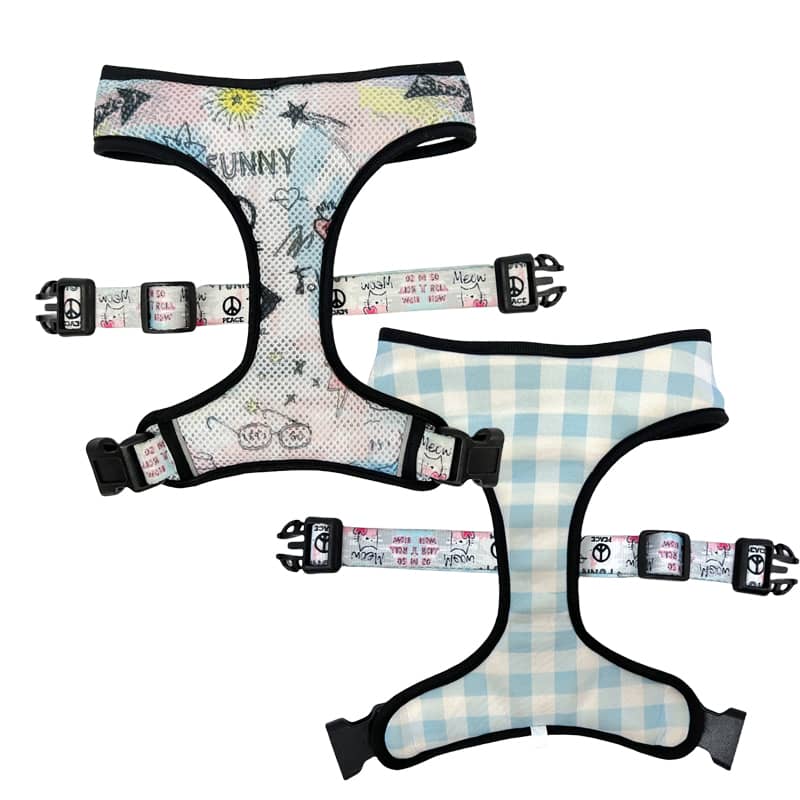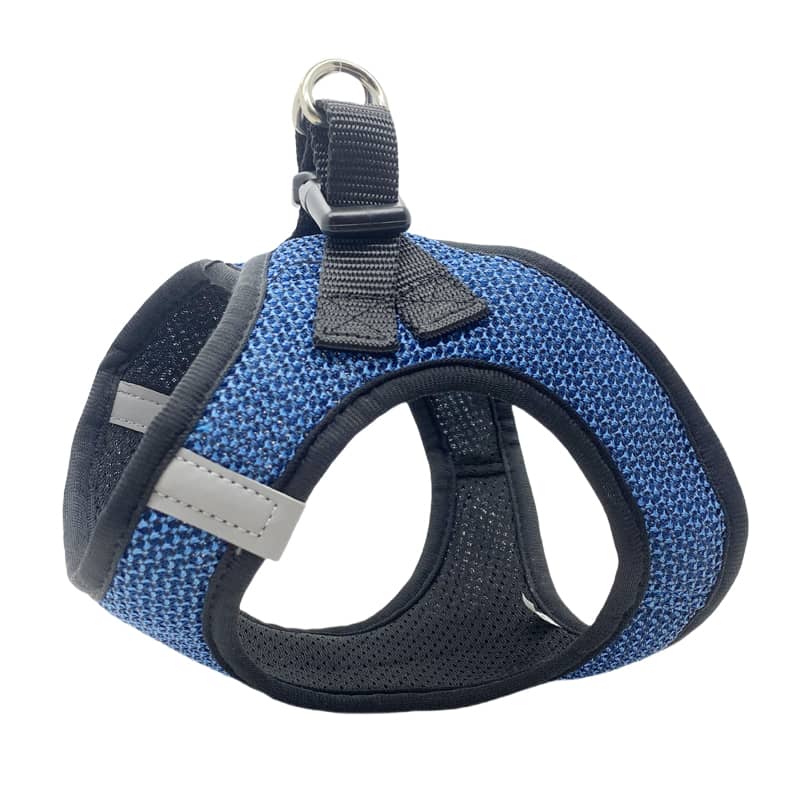Choosing the right gear for your dog is essential for their safety, comfort, and overall well-being. One of the most debated topics among pet owners is whether to use a collar or a harness. While collars have been the traditional choice, harnesses are gaining popularity for their numerous benefits. In this guide, we’ll explore when to use a dog harness, backed by research and expert insights, to help you make the best decision for your furry friend.

Introduction
What is a Dog Harness?
A dog harness is a piece of equipment that wraps around your dog’s torso, distributing pressure across their chest and back rather than focusing it on the neck like a collar. Harnesses come in various styles, such as front-clip, back-clip, and no-pull designs, each tailored to specific needs. Unlike collars, which can strain a dog’s neck, harnesses provide a safer, more comfortable alternative, particularly for dogs with health or behavioral challenges. Learn more about the different types of dog harnesses to find the best fit for your pet.
Why It Matters
The demand for dog harnesses is skyrocketing, reflecting a growing awareness of their advantages. Recent market research projects the North America dog harness market to surpass USD 201.9 million by 2032, with a compound annual growth rate (CAGR) of 6.3% from 2022. This surge is fueled by pet owners prioritizing safety, comfort, and control during walks. As awareness of the risks associated with collars grows, harnesses are becoming the preferred choice for responsible pet care. Discover how this trend is shaping the future of dog harnesses.
What You’ll Learn
In this comprehensive guide, you’ll uncover the key scenarios where a dog harness outperforms a collar. Whether your dog pulls on the leash, has health issues, or requires extra control in busy settings, we’ll provide actionable advice supported by research and expert opinions. By the end, you’ll be equipped to decide when a harness is the right choice and how to select the perfect one from options like our custom dog harnesses.
When to Use a Dog Harness: Key Scenarios
When Your Dog Pulls on the Leash
The Challenge of Pulling
Leash pulling is a widespread issue, with a 2008 study revealing that about 70% of dog owners deal with this behavior. Left unchecked, pulling can lead to neck injuries when using a collar. Harnesses mitigate this risk by distributing force across the chest and back, making them ideal for pullers. Explore our guide to no-pull harnesses for deeper insights.
Why Harnesses Work Better
Research from Nottingham Trent University found that collars pose a significant risk of neck injury during pulling, while harnesses offer a safer alternative. Front-clip harnesses, in particular, redirect a dog’s movement toward the owner, discouraging pulling and enhancing walk enjoyment. “For dogs that pull, a front-clip harness can be transformative. It gently shifts their focus back to you, simplifying training,” says Dr. Emily Thompson, a certified dog trainer with over 15 years of experience.
Choosing the Right Harness
For persistent pullers, consider a durable option like our no-pull harness. Pair it with a suitable leash for optimal control. Below, check out a carousel of our top harnesses for pullers:
Carousel Suggestion: Display side-by-side images with captions:
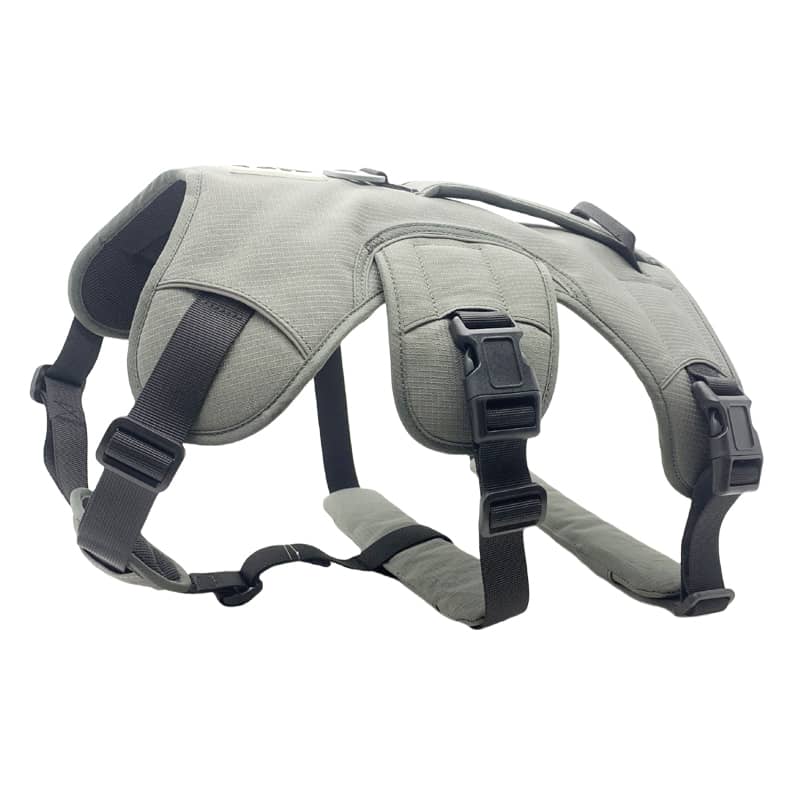 | 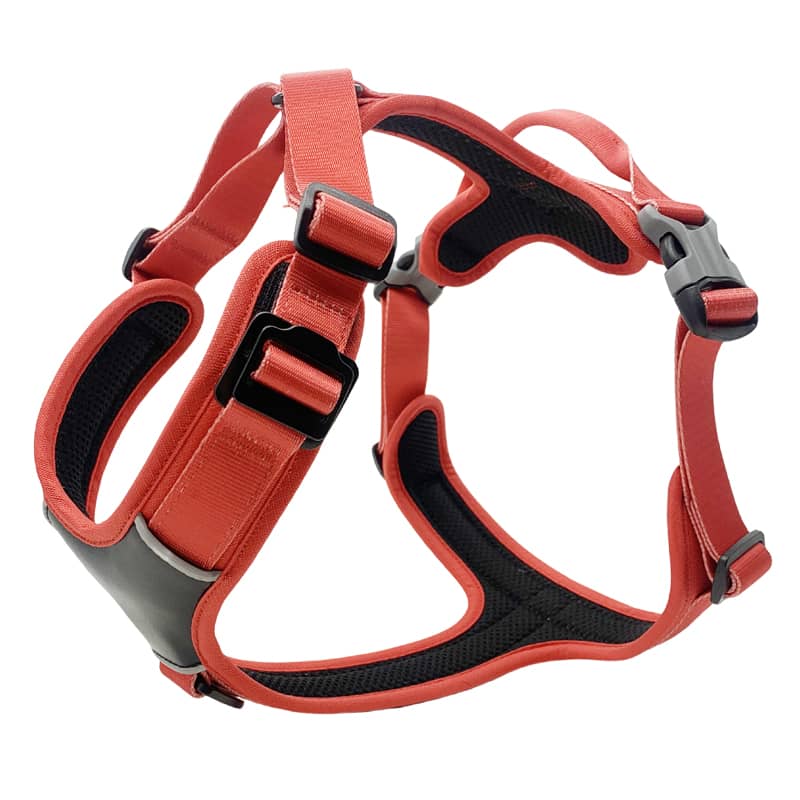 |
| Caption: “No-Pull Harness – Perfect for Strong Pullers” | Caption: “H-Style Harness – Comfort and Control” |
If Your Dog Has Respiratory or Neck Issues
Health Risks with Collars
Dogs with respiratory issues, such as brachycephalic breeds (e.g., pugs, bulldogs) or those with conditions like tracheal collapse, face heightened risks with collars. Pressure on the throat can worsen breathing difficulties or aggravate neck conditions. A study in the Journal of the American Animal Hospital Association notes that tracheal collapse, common in small breeds, can be managed by avoiding neck strain.
Harnesses as a Solution
Harnesses eliminate throat pressure by distributing it across the chest, making them essential for dogs with health concerns. “For brachycephalic breeds, a harness isn’t just a preference—it’s critical for their well-being,” explains Dr. James Carter, a veterinary expert specializing in canine respiratory health. Our breathable harness is designed with these dogs in mind.
Best Options for Comfort
Opt for a lightweight, adjustable harness to ensure a snug yet comfortable fit. Brachycephalic dogs benefit from our USA-made harnesses, crafted for durability and breathability. View our carousel below:
Carousel Suggestion:
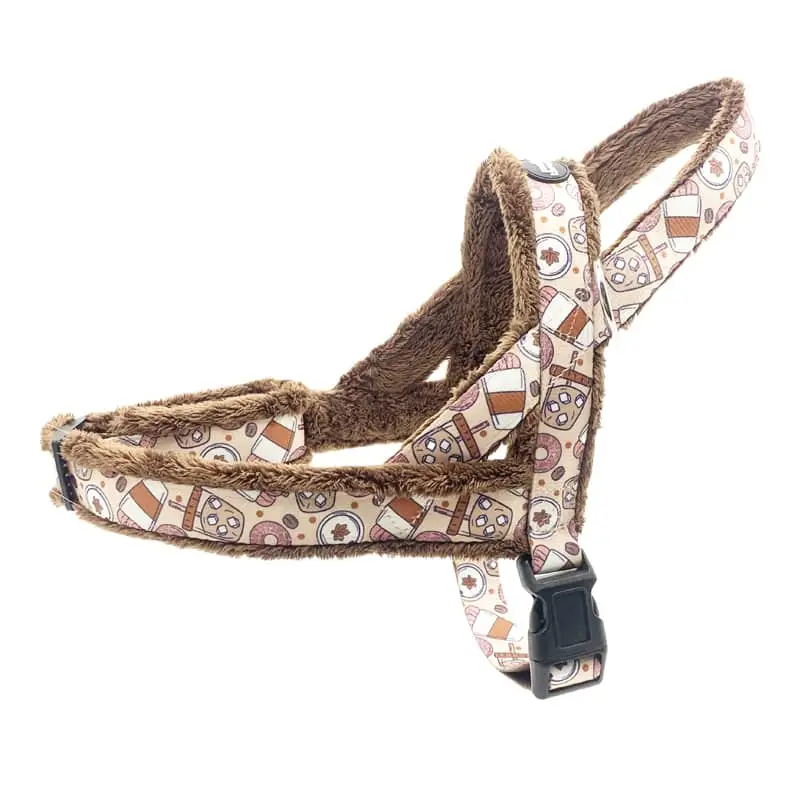 | 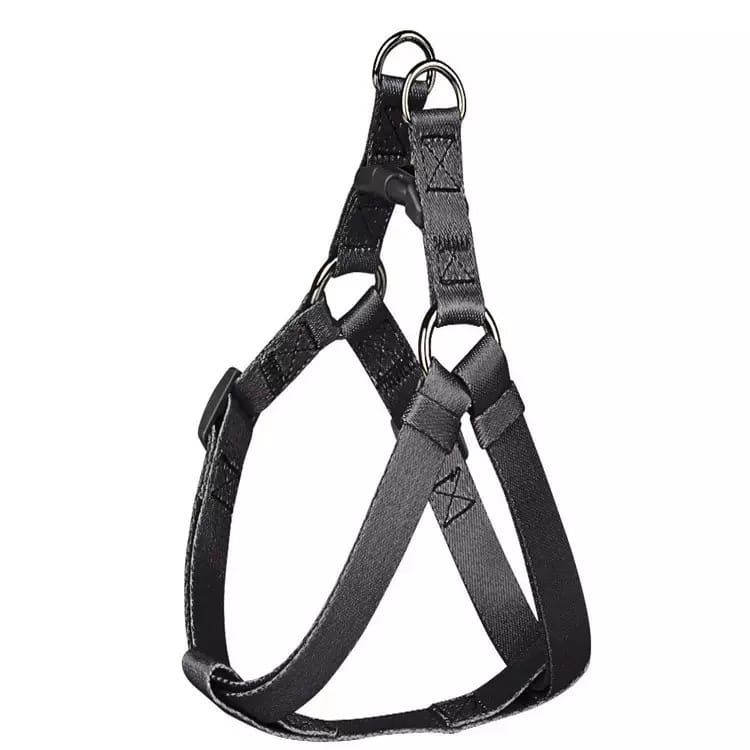 |
| Caption: “Breathable Harness – Ideal for Brachycephalic Breeds” | Caption: “RPET Harness – Eco-Friendly Comfort” |
During Training to Improve Leash Manners
Training Challenges
Teaching a dog to walk politely on a leash can be tough, especially with pulling or distractions. Collars may cause choking or discomfort, undermining positive reinforcement. Harnesses offer better control without distress, making them a top training tool.
Evidence Supporting Harnesses
A study in the Journal of Applied Animal Welfare Science found that harnesses reduce pulling more effectively than collars, aiding in behavior improvement. Front-clip designs excel at redirecting attention, fostering calm walks. “Pair a harness with treats and praise for consistent results,” advises Sarah Miller, a professional dog behaviorist.
Practical Training Tips
Use a harness like our personalized harness alongside a training leash. Start in a quiet area, rewarding good behavior. See our training-ready harnesses below:
Carousel Suggestion:
Stay tuned for the next section, covering additional scenarios like escape artists, older dogs, and high-control situations.
For Dogs That Are Escape Artists
The Risk of Escapes
Some dogs have a knack for slipping out of traditional collars, especially breeds with slender necks like Greyhounds or Whippets. This can be a nightmare in busy areas where an escaped dog might dart into traffic or get lost. Harnesses offer a secure alternative, wrapping around the dog’s torso with multiple attachment points that make wiggling free nearly impossible. This added security is a lifesaver for owners who’ve experienced the panic of a runaway pup.
Why Harnesses Are More Secure
Unlike collars, which focus pressure on the neck, harnesses distribute it across the chest and shoulders. For escape artists, a properly fitted harness with adjustable straps ensures a snug, custom fit. “A harness is a game-changer for dogs that slip collars—it’s like a safety belt for your pet,” says Lisa Nguyen, a seasoned dog walker. Look for designs with sturdy clips and reinforced stitching to keep even the craftiest dogs contained.
Best Harnesses for Escape Artists
When choosing a harness for an escape-prone dog, prioritize adjustability and durability. Options with multiple straps and a tight fit around the body are ideal. Tactical harnesses, for instance, provide unmatched security with their robust build—perfect for adventurous dogs who test boundaries. Personalized harnesses tailored to your dog’s measurements can also prevent slip-outs, ensuring both safety and style.
For Older Dogs or Those with Mobility Issues
Supporting Aging Pets
Senior dogs or those with arthritis, hip dysplasia, or post-surgical recovery often need extra help getting around. Harnesses with handles allow owners to lift or guide their pets without straining fragile necks or spines. This support is crucial for maintaining mobility while keeping your dog comfortable and pain-free during walks or daily activities.
Why Harnesses Are Ideal
Harnesses reduce pressure on vulnerable areas by evenly distributing weight across the body. For older dogs, padded designs with ergonomic handles make a huge difference. “A harness with a handle can be a lifesaver for aging pets—it’s like giving them a gentle hug while assisting,” explains Dr. Rachel Kim, a veterinarian specializing in geriatric care. This makes harnesses a compassionate choice for dogs needing a little extra TLC.
Best Options for Mobility
Look for harnesses with breathable padding and sturdy handles for easy lifting. Lift harnesses are particularly useful for helping dogs up stairs or into vehicles. Breathable materials keep your pet cool, while adjustable fits ensure long-term comfort—essential for dogs with changing mobility needs.
In Situations Requiring Extra Control
Navigating Busy Environments
Whether you’re walking in a crowded park, near busy streets, or hiking rugged trails, keeping your dog under control is critical. Harnesses excel here, offering leverage that collars can’t match. They also support hands-free leash setups, making them perfect for active owners who need freedom without sacrificing safety.
Why Harnesses Excel
With attachment points on the chest or back, harnesses give you more control over your dog’s movements, especially for strong or reactive breeds. “In high-stakes situations, a harness is non-negotiable—it’s about safety for both dog and owner,” says Mark Davis, a dog trainer and outdoor enthusiast. This control reduces sudden lunges, keeping walks stress-free.
Best Harnesses for Control
Choose harnesses with multiple leash points and rugged materials. H-style or tactical harnesses are top picks for their durability and ability to handle energetic dogs in challenging settings. These options ensure you’re prepared for any adventure, from urban strolls to wilderness treks.
Dog Harnesses vs. Collars: A Quick Comparison
Here’s a side-by-side look at how harnesses stack up against collars:
| Feature | Dog Harness | Dog Collar |
|---|---|---|
| Neck Protection | Distributes force across body, less strain | Focuses force on neck, risks injury |
| Control | Better for strong or pulling dogs | Less effective if dog pulls |
| Comfort | More comfortable, especially for health issues | Can chafe or hurt if tight |
| Training | Great for leash training, reduces pulling | Usable but may cause discomfort |
| Escape Risk | Harder to slip out of | Easier for some dogs to escape |
| Versatility | Ideal for hiking, running, and more | Best for basic walks and ID tags |
Takeaway: Harnesses win for safety, control, and comfort in most cases, making them a versatile choice for dog owners.
Answers to Common Questions
1. What Are the Benefits of Using a Dog Harness Over a Collar?
Harnesses reduce neck strain, improve control, enhance comfort, and secure escape-prone dogs. Research from 2020 shows they cut neck pressure significantly compared to collars, offering a safer walk.
2. How Does a Harness Help with Pulling Behavior?
Front-clip harnesses redirect pulling dogs toward you, discouraging the habit humanely. A 2015 study found they outperform collars in reducing leash tension, making walks more pleasant.
3. Are There Dogs That Shouldn’t Use a Harness?
Dogs with sensitive skin or tiny puppies might find harnesses irritating. Opt for soft materials or consult a vet for alternatives if needed.
4. How Do I Choose the Right Size Harness for My Dog?
Measure your dog’s chest, check size charts, and ensure a snug yet comfy fit—two fingers should slip underneath. Adjustability is key.
5. Can a Harness Be Used for Training Purposes?
Absolutely! Harnesses aid in leash training and obedience with gentle control, especially with front attachments.
6. When Should I Switch from a Collar to a Harness?
Switch if your dog pulls, has breathing issues, needs training, escapes easily, or requires mobility support. Vet advice can guide you.
Why Harnesses Are Gaining Popularity
Market Growth
The harness market is surging, expected to hit USD 201.9 million by 2032 with a 6.3% annual growth rate. This reflects growing awareness of their benefits as owners prioritize pet well-being.
Real-World Impact
With 70% of owners reporting pulling issues, harnesses solve a widespread problem. They enhance safety and enjoyment on walks, proving their practical value every day.
Conclusion
Choosing between a harness and a collar isn’t just about preference—it’s about your dog’s safety and comfort. Harnesses shine in scenarios like pulling, health challenges, training, escapes, mobility needs, and high-control situations. They’re a smart investment in your dog’s happiness and your peace of mind.
Ready to make the switch? Explore Bestone’s range of high-quality harnesses today. From tactical designs to lift options, we’ve got the perfect fit for your pup. Visit our product page or reach out for tailored advice—your dog deserves the best, so take the first step toward better walks now!
External Resources:

